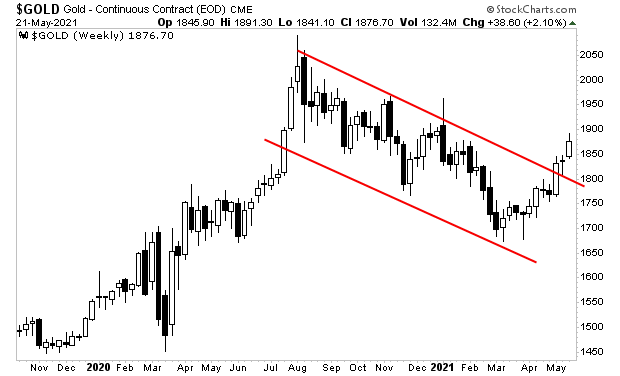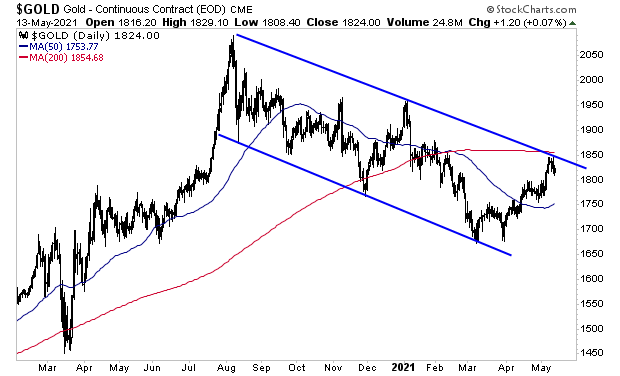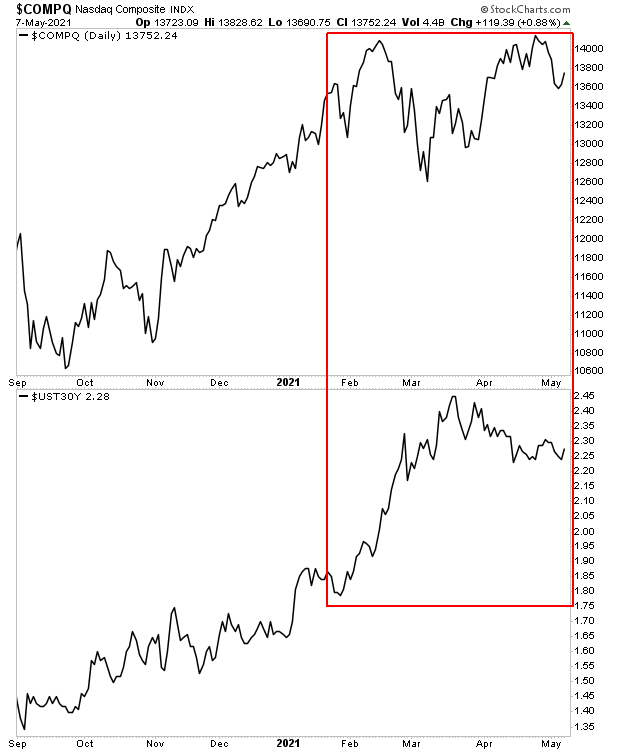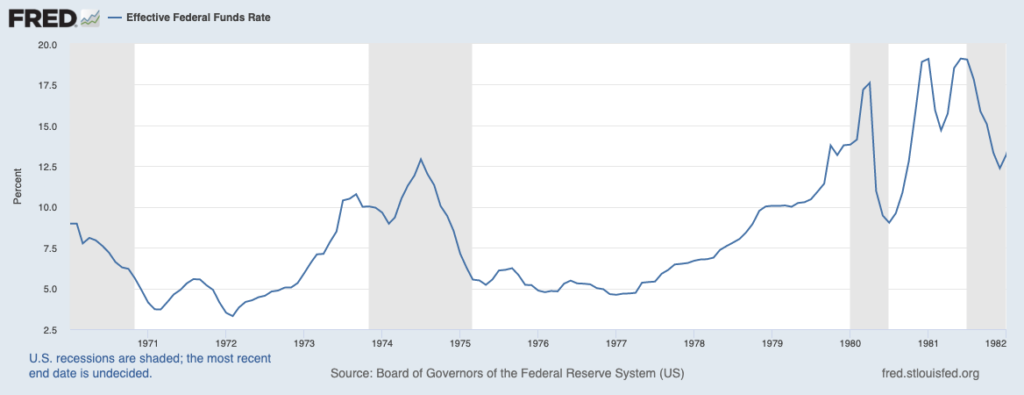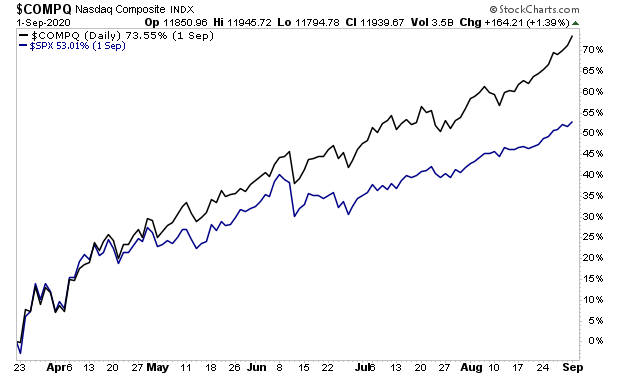Yesterday I noted that gold is telling us that the Fed is indeed going to let inflation run hot.
Remember, the Fed can stop inflation at any point by tightening monetary policy. If the Fed were to announce tomorrow that it is hiking rates 3% while ending its QE program, inflation would be DEAD.
With that in mind, the multi-trillion-dollar question over the last few months has been…
WILL the Fed act to stop inflation before it gets out of control?
I believe gold has finally given us the answer. It’s NOPE.
Gold has just broken out of a nine-month consolidation with conviction.
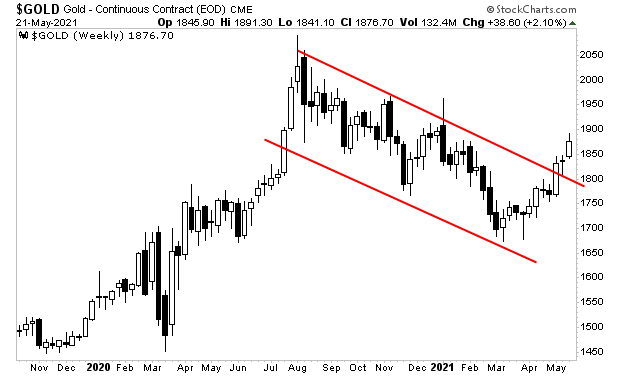
This is an extremely bullish development, particularly when you consider that gold had to break through both its 50-day moving average (DMA) and its 200-DMA to do this.
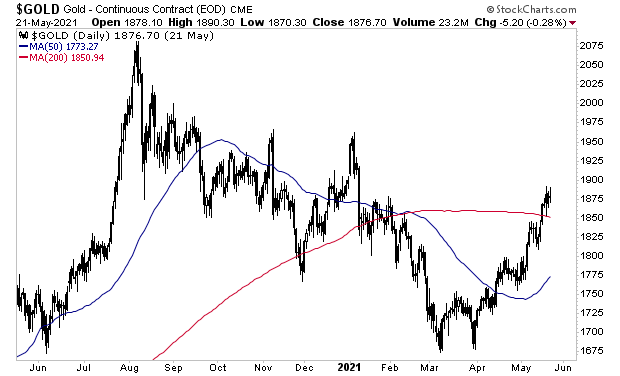
So, this begs the question… has gold finally bottomed? Because if it has… the upside target for that bull flag is north of $2,400 per ounce.
During major bull runs in gold, gold miners typically outperform the precious metal by a significant margin. The below chart shows the ratio between the VanEck Vectors Gold Miners ETF (GDX) and the price of gold bullion (GDX: $GOLD)
When GDX outperforms gold, this line rises. And when GDX underperforms gold, this line falls. As you can see, since March of 2021, this line has been rising, which indicates GDX is outperforming gold by a significant margin.
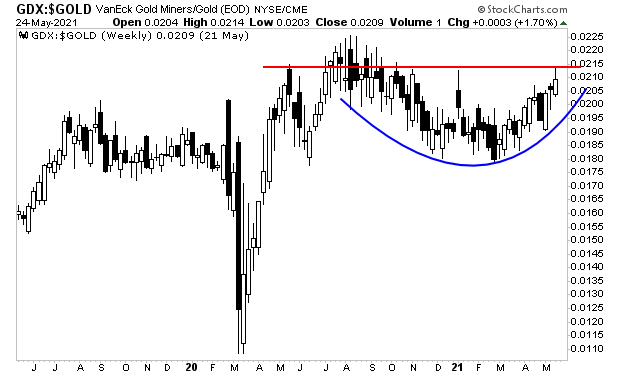
Moreover, we have a clear rounded bottom (blue line in the chart above) forming here.
That is a VERY bullish sign for this ratio. If it can break above resistance (red line in the chart above) then we have confirmation that THE bottom is in for gold.
When that happens, gold will begin its ascent higher to new all-time highs, eventually hitting north of $2,400 per ounce.
On that note, we just published a Special Investment Report concerning FIVE secret investments you can use to make inflation pay you as it rips through the financial system in the months ahead.
The report is titled Survive the Inflationary Storm. And it explains in very simply terms how to make inflation PAY YOU.
We are making just 100 copies available to the public.
To pick up yours, swing by:
https://phoenixcapitalmarketing.com/inflationstorm.html
Best Regards
Graham Summers
Chief Market Strategist
Phoenix Capital Research



